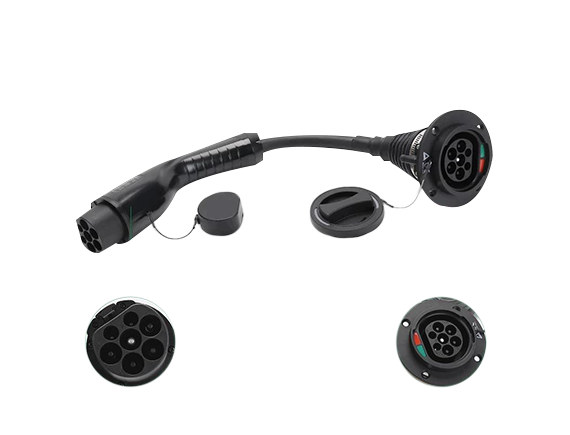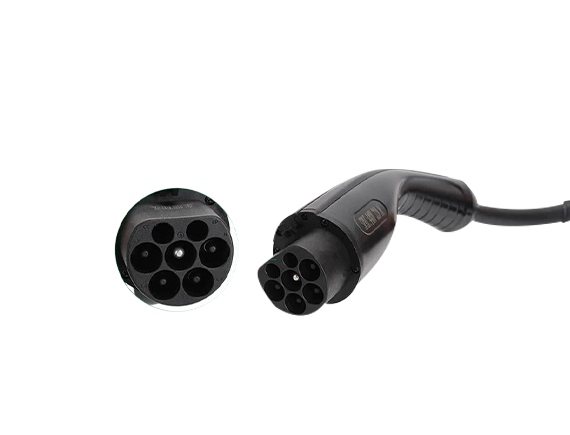Navigating the world of electric vehicles (EVs) requires understanding EV charger socket types.
These connectors are the lifeline of your EV, determining charging speed, compatibility, and efficiency.
With advancements in EV technology and regional standards evolving, knowing the differences between Type 1, Type 2, CCS, CHAdeMO, and Tesla connectors is essential.
This guide will explore all EV charger socket types, helping you make an informed decision for home and public charging.
Why Different EV Charger Socket Types Exist

EV manufacturers and regions have adopted different charging connector standards due to varying electrical infrastructures and vehicle requirements.
Key Factors Influencing EV Charger Socket Types:
- Voltage & Current Standards (AC vs. DC charging)
- Regional Regulations (North America, Europe, Asia)
- Charging Speed (Level 1, Level 2, DC Fast Charging)
- Vehicle Compatibility (Tesla vs. non-Tesla EVs)
Understanding these differences ensures you select the right EV charging plug for your needs.
Global Variations in EV Charger Socket Types
Different regions use distinct EV charging connector types based on local standards.
| Region | Primary AC Socket | Primary DC Fast Charger |
|---|---|---|
| North America | Type 1 (J1772) | CCS1, Tesla NACS (J3400) |
| Europe | Type 2 (Mennekes) | CCS2 |
| Japan | Type 1 | CHAdeMO |
| China | GB/T | GB/T DC |
These variations mean EV owners must know which EV charger socket types work in their region.
In-Depth Analysis of EV Charger Socket Types

1. Type 1 (SAE J1772) – Standard in North America & Japan
- Charging Type: AC (Level 1 & Level 2)
- Max Power: 19.2 kW (80A @ 240V)
- Compatibility: Most non-Tesla EVs in the U.S.
- Pros: Widely available, durable (10,000+ cycles)
- Cons: Slower than DC fast charging
2. Type 2 (Mennekes) – Standard in Europe
- Charging Type: AC (3-phase)
- Max Power: 22 kW (400V)
- Compatibility: Most European EVs, including Tesla
- Pros: Faster AC charging, bidirectional charging support
- Cons: Less common in North America
3. CCS (Combined Charging System) – Fast Charging Standard
- CCS1 (North America): Extends Type 1 with DC pins (up to 350 kW)
- CCS2 (Europe): Extends Type 2 with DC pins (up to 350 kW)
- Pros: High-speed DC charging, future-proof
- Cons: Bulkier connector
4. CHAdeMO – Japanese Fast Charging Standard
- Max Power: Up to 400 kW (with newer versions)
- Unique Feature: Bidirectional charging (V2G support)
- Pros: High power, used by Nissan, Mitsubishi
- Cons: Being phased out in favor of CCS
5. Tesla NACS (North American Charging Standard – J3400)
- Exclusive to Tesla (but opening to other EVs in 2025)
- Max Power: 250 kW (Supercharger V3)
- Pros: Ultra-fast, reliable Tesla network
- Cons: Limited non-Tesla compatibility (for now)
6. GB/T – China’s EV Charging Standard
- AC & DC variants
- Max Power: Up to 900 kW (future-proof)
- Used by: BYD, NIO, and other Chinese EVs
How to Choose the Right EV Charger Socket Type

1. Check Your Vehicle’s Compatibility
- Most EVs in the U.S. use Type 1 (J1772) or CCS1 for fast charging.
- Teslas use NACS (J3400) but can adapt to J1772/CCS1.
- European EVs typically use Type 2 & CCS2.
2. Consider Charging Speed Needs
- Level 1 (120V): Slow (3-5 miles/hour)
- Level 2 (240V): Faster (12-60 miles/hour)
- DC Fast Charging (CCS/CHAdeMO): 80% in 20-40 mins
3. Future-Proofing Your EV Charging Setup
- CCS & NACS (J3400) will dominate North America.
- Bidirectional charging (V2G) is growing.
FAQs on EV Charger Socket Types
1. What are the different types of EV charging sockets?
The main EV charger socket types are:
- Type 1 (J1772) – North America
- Type 2 (Mennekes) – Europe
- CCS (Combo 1 & 2) – Fast charging
- CHAdeMO – Japanese standard
- Tesla NACS (J3400) – Tesla’s proprietary plug
2. What type of outlet is needed for an EV charger at home?
- Level 1: Standard 120V outlet (slow)
- Level 2: 240V outlet (NEMA 14-50 recommended)
- DC Fast Charging: Requires commercial-grade stations
3. Can I use a Tesla charger for a non-Tesla EV?
- Yes, with an adapter (e.g., CCS-to-Tesla).
- From 2025, Tesla NACS will be open to other EVs.
4. Which is better: CCS or CHAdeMO?
- CCS is more future-proof in North America & Europe.
- CHAdeMO is declining but still used by Nissan.
Conclusion: Making the Best Choice for Your EV Charging Needs
Understanding EV charger socket types ensures seamless charging at home and on the road. Whether you need Type 1, Type 2, CCS, or Tesla NACS, choosing the right connector maximizes efficiency and convenience.
Need help selecting the best EV charger? Contact Us Today for Expert Advice





